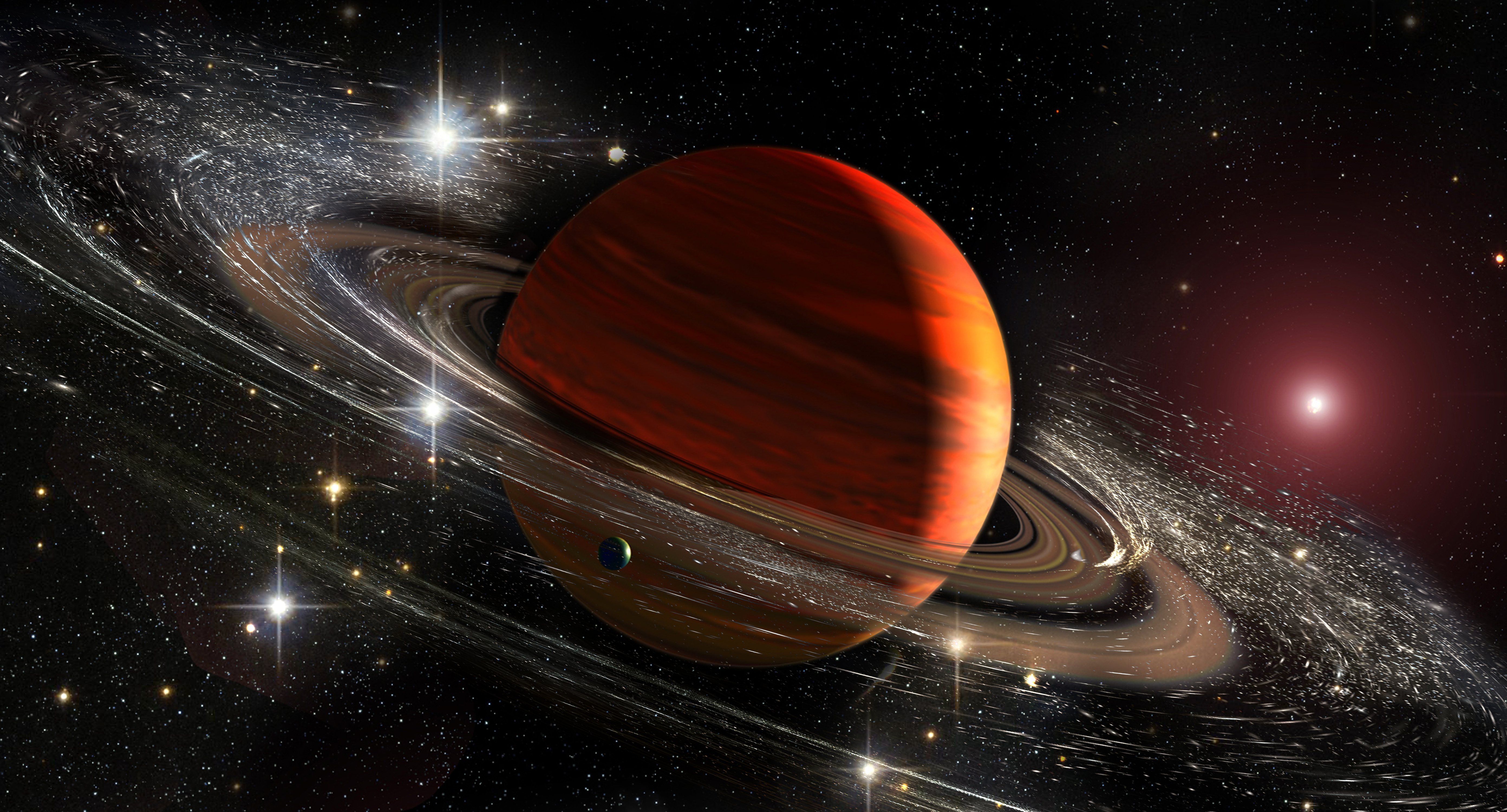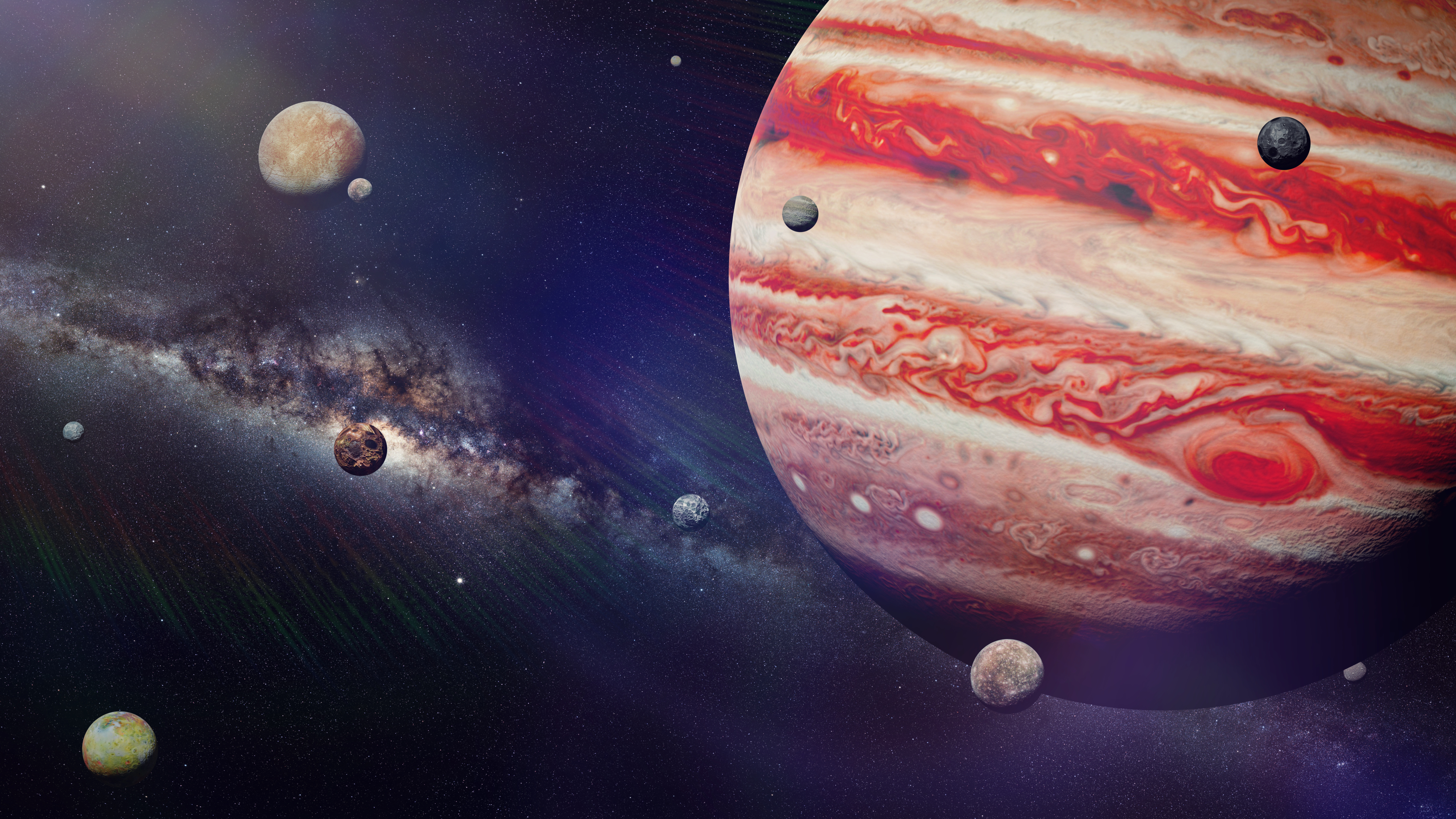Distant planets have captivated our imagination for centuries. But did you know that many planets in our solar system have moons of their own? These moons play a significant role in shaping the dynamics of their planetary systems. Let's dive deeper into the intriguing world of moons and find out which planet reigns supreme with the highest moon count.
Moons in the Solar System
Before we embark on our journey to discover the planet with the most moons, let's understand what a moon is and take a brief tour of our solar system. In simple terms, a moon is a natural satellite that orbits around a planet. Think of them like a planet's space friends! Each of the planets in our solar system has its own unique moon companions. However, the number of moons surrounding each planet varies significantly.
Some planets have a huge number of moons, while others have just a few or none at all. This is due to the formation and evolution processes of planetary systems, including gravitational interactions, and collisions with other celestial objects. Some planets are really good at attracting objects which enter their gravitational pull and become moons!
Jupiter: The King of Moons?

Among the planets in our solar system, Jupiter, the largest gas giant, long stood out as the king of moons. With its immense size and gravitational influence, Jupiter has managed to gather an impressive entourage of moons around itself. Presently, Jupiter boasts a staggering count of 95 known moons.
Among Jupiter's moon family, four stand out as the largest and most well-known: Io, Europa, Ganymede, and Callisto. These four moons, known as the Galilean moons, were discovered by Galileo Galilei in 1610 and have since fascinated scientists with their unique characteristics. Each of these moons possesses its own distinctive features, including volcanic activity, subsurface oceans, and icy surfaces.

Until recently, it was thought that Jupiter was the undisputed champion in terms of moons. However, in 2023, 62 new moons were discovered on Saturn! This brought their total to 145, making Saturn the newly crowned king of moons. These newly discovered moons are small and orbit far from Saturn, which explains why it took so long for us to find them!
Looking for the perfect gift for a young explorer? Blast off with our Astronaut Starter Kit, which includes a model solar system, model spaceship, and much more!

Are There Moons Outside of Our Solar System?
Almost definitely!
However, spotting and identifying moons beyond our solar system is an immensely challenging task for astronomers. The quest to detect exomoons, or moons orbiting planets outside of our solar system, requires meticulous observation, advanced technology, and a deep understanding of celestial dynamics. In an exciting development, astronomers have recently made a discovery—a potential exomoon located beyond our solar system.
A team of astronomers led by David Kipping at Columbia University used innovative machine learning techniques to analyze data from the Kepler Space Telescope. Their goal was to uncover potential exomoons lurking within the vast exoplanet data set. This pioneering approach involved training a computer algorithm to identify patterns in the data that could indicate the presence of exomoons. After an extensive search, the team identified a tantalizing candidate—a possible exomoon around a distant exoplanet known as Kepler-1625b – about 8,200 light years away from us.
The candidate exomoon, nicknamed "Moonmoon" by the scientific community, created a buzz of excitement. However, it is essential to exercise caution and undergo rigorous verification processes before confirming the existence of an exomoon. The data collected from telescopes provides valuable clues, but further observations and analyses are necessary to ensure the credibility of these findings.
The study of exomoons is still in its infancy, and astronomers continue to refine their methods and push the boundaries of detection. Ongoing space missions and advancements in technology, such as the James Webb Space Telescope, hold promise for expanding our knowledge of exomoons. These endeavors will enable astronomers to scrutinize exoplanet systems with greater precision, opening up new frontiers of exploration and unraveling the mysteries of moons beyond our solar system.
Conclusion
As we conclude our journey through the realms of planets and moons, we reflect on the awe-inspiring vastness and diversity of our universe. Within our solar system, Saturn stands tall as the planet with the most moons, boasting an incredible count of 145. In the vast expanse of the cosmos, exoplanets with their entourage of moons add to the marvels of our universe. While further research and advancements in technology will undoubtedly unveil more mysteries and unveil new celestial companions, one thing remains certain—our universe never ceases to amaze and inspire us.
FAQs
1. Can moons have moons?
Yes, in theory, moons could have moons of their own. However, the stability and formation of such moons within a moon's gravitational influence remain subjects of scientific exploration and debate.
2. How are moons formed?
Moons can be formed through various processes, including accretion from a planet's protoplanetary disk, capture events where a moon is gravitationally captured by a planet, and collisions between celestial bodies that result in the formation of moons.
3. Which moon is the largest in the solar system?
Ganymede, one of Jupiter's moons, holds the title of being the largest moon in the solar system. It is even larger than the planet Mercury.
4. Are all moons spheres?
No, not all moons are spherical. Moons can come in various shapes, including irregular shapes caused by factors such as their formation process, gravitational interactions, and tidal forces.
5. Can moons support life?
Moons with the right conditions, such as a stable atmosphere, liquid water, and suitable temperatures, could potentially support life. Scientists are actively exploring moons within our solar system, such as Europa and Enceladus, for signs of habitability.
